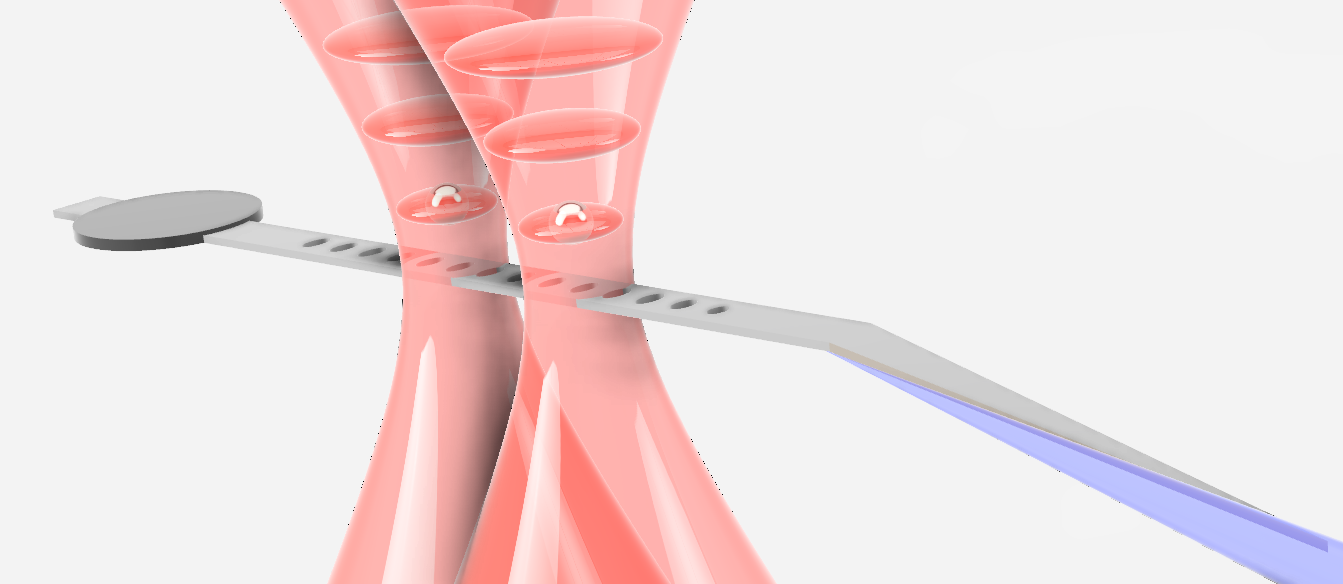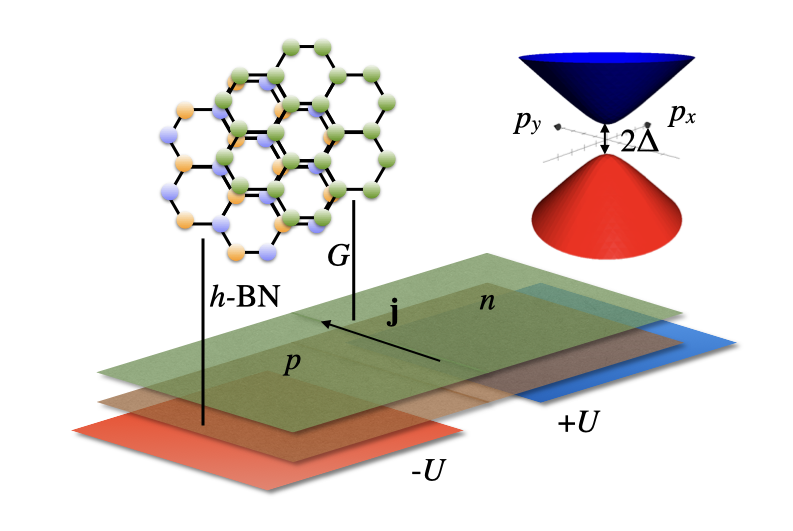Research
Telecom emitters in silicon photonics
Silicon not only plays a major role in semiconductor electronics but also offers tools to manipulate information in the optical domain in a scalable manner thanks to its compatibility with the advanced CMOS processes. The ability to get photons to interact with each other, via quantum nonlinearity, will be crucial in building quantum information processing devices such as all-optical transistors, single photon sources, and deterministic quantum logic. We will introduce quantum emitters to silicon photonics, taking advantage of this mature platform to explore the possibility of building a new generation of integrated quantum photonics.
Indistinguishable photons from an artificial atom in silicon photonics
L. Komza, P. Samutpraphoot, M. Odeh, Y-L. Tang, M. Mathew, J. Chang, H. Song, M-K. Kim, Y. Xiong, G. Hautier, A. Sipahigil
Nature Communications 15 (1), 6920 (2024).; arXiv:2211.09305.
A nanophotonic interface for atoms in optical tweezers
Atoms in tweezer arrays have recently emerged as a leading platform for quantum information processing. As these systems are growing more complex, there is an increasing demand for optical interfaces to enable efficient readout and better connectivity. We realize such an interface using a nanophotonic cavity and demonstrate quantum control of two atoms strongly coupled to it. In the most recent work, we entangle two atoms at the cavity and “ship” the atoms out and verfy that they remain entangled away from the cavity.
Control and entanglement of individual Rydberg atoms near a nanoscale device
P. L. Ocola, I. Dimitrova, B. Grinkemeyer, E. Guardado-Sanchez, T. Đorđević, P. Samutpraphoot, V. Vuletić, M. D Lukin
Physical review letters 114 (25), 256601 (2024); arXiv:2210.12879.
Entanglement transport and a nanophotonic interface for atoms in optical tweezers
T. Ðorđević†, P. Samutpraphoot†, P. L. Ocola†, H. Bernien, B. Grinkemeyer, I. Dimitrova,
V. Vuletić, and M. D. Lukin
Science 373, 1511 (2021).; arXiv:2105.06485.
Perspective article on this work:
Photons and qubits get a better connection
A. Kaufman | Science (Quantum Engineering Perspective), 373, 1436-1437 (2021).
Strong coupling of two individually controlled atoms via a nanophotonic cavity
P. Samutpraphoot†, T. Ðorđević†, P. L. Ocola†, H. Bernien, C. Senko, V. Vuletić, and M. D. Lukin
Physical Review Letters 124, 063602 (2020); arXiv:1909.09108.
A quantum network node based on a nanophotonic interface for atoms in optical tweezers
P. Samutpraphoot |
Thesis: Ph.D., Harvard University, Department of Physics, 2021.
Valley transport in topological Dirac materials
Conventional electronics relies on the manipulation of electrons as charge carriers. However, electrons in particular quantum materials can possess extra degrees of freedom such as spin or valley. We theoretically investigated valley transport phenomena arising from Berry curvature, a property associated with band topology in gapped Dirac materials such as graphene on hexagonal Boron Nitride (G/hBN).
Topological Valley Currents in Gapped Dirac Materials
Y. D. Lensky, J. C. W. Song, P. Samutpraphoot, and L. S. Levitov
Physical Review Letters 114 (25), 256601 (2015); arXiv:1412.1808.
Topological Bands in G/h-BN Heterostructures
J. C. W. Song, P. Samutpraphoot, and L. S. Levitov
Proceedings of the National Academy of Sciences 112 (35), 10879- 10883 (2015); arXiv:1404.4019.
Anomalous Hall effect and persistent valley currents in graphene p-n junctions
P. Samutpraphoot |
Thesis: S.B., Massachusetts Institute of Technology, Department of Physics, 2014.
Laser development
Three-dimensional programming of nanolaser arrays through a single optical microfiber
D. I. Song, A. Yu, P. Samutpraphoot, J. Lee, M. Kim, B. J. Park, A. Sipahigil, M.-Ki Kim
Optica 9 (12), 1424-1432 (2022)
Passive intrinsic-linewidth narrowing of ultraviolet extended-cavity diode laser by weak optical feedback
P. Samutpraphoot, S. Weber, Q. Lin, D. Gangloff, A. Bylinskii, B. Braverman, A. Kawasaki, C. Raab, W. Kaenders, and V. Vuletić
Optics Express 22, 11592-15999 (2014); arXiv:1402.6379

